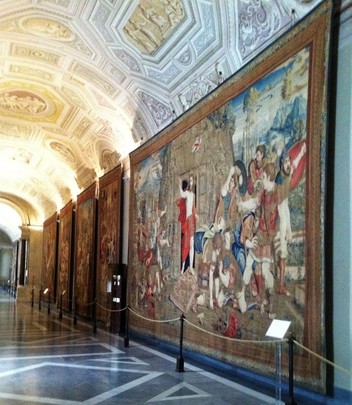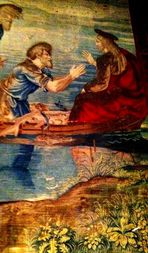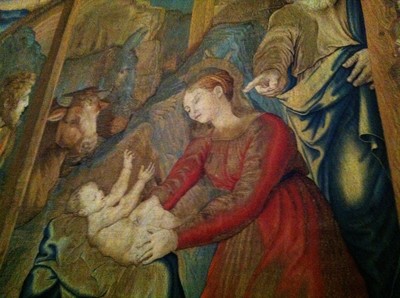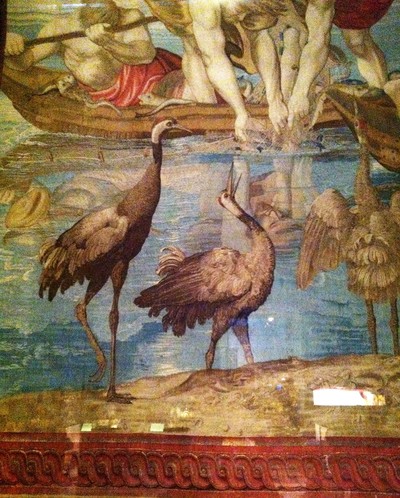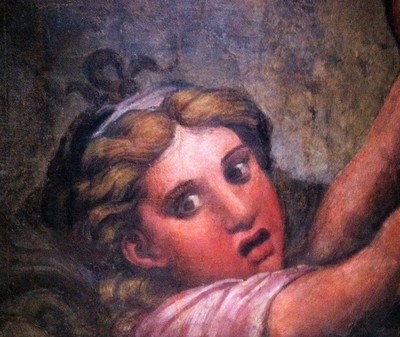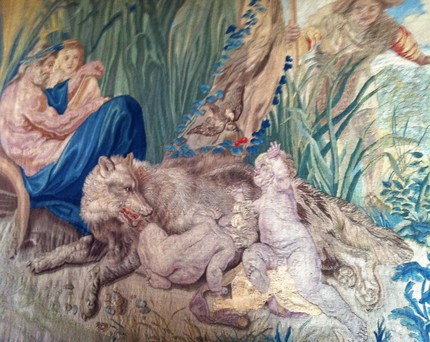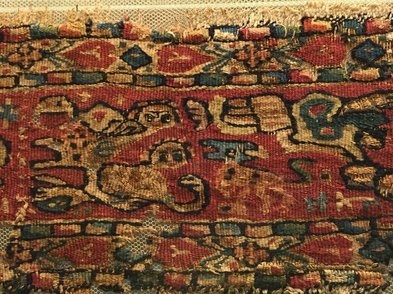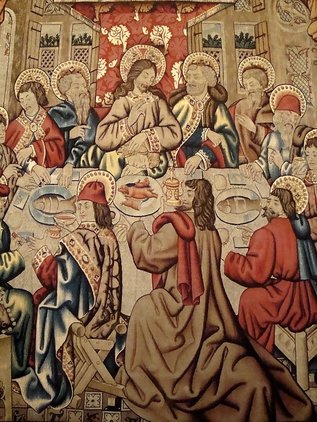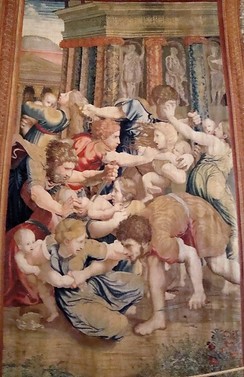
The artist provided the preparatory draft that was sized and painted either by the artist himself or by a workshop specialized artist.
Draft and models circulated. The workshops used the same models several times.
Clients chose their tapestry between these models whose details could be combined: like figures, backgrounds or floral motifs.
The workshops also took inspiration from major artists copying details or figures that were used out of their original contest.
The controversy between artists and tapestry workshops broke out in bruxelles in 1476. The result was the prohibition of intervening on the painted models from the weavers. Only background and decorative elements could be changed.
